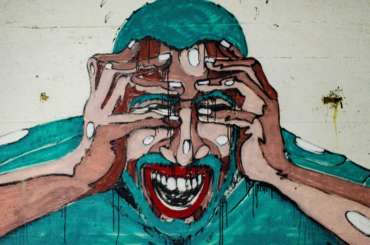In a world teeming with stories of adversity, suffering, and resilience, understanding the potency of these narratives is essential. While such stories may appear captivating and offer moments of inspiration, it is crucial to critically examine their effects on individuals, communities, and society as a whole.Let’s explore the ways in which damage-centered narratives have shaped our collective consciousness and fueled positive and negative change. It is essential to navigate the complexities of damage-centered narratives with a balanced perspective. While these narratives have the power to inspire and ignite change, it is equally crucial to acknowledge the potential harms they can perpetuate.
Throughout history, the power of damage-centered narratives has been evident. From ancient folklore and mythology to classic literature, stories that center around a struggle and overcoming obstacles have captivated and inspired generations. Think of Homer’s epic poem “The Odyssey,” where Odysseus endures countless trials and tribulations on his journey back home, or Victor Hugo’s “Les Misérables,” which shines a light on the human spirit in the face of poverty and injustice. These narratives resonate with us because they reflect the challenges we encounter in our lives and offer hope for triumph over adversity. However, it is important to recognize that these narratives often perpetuate stereotypes, reinforce negative biases, and overlook the nuanced complexities of human experiences.
In the realm of education, damage-centered narratives provide a powerful tool for engaging students and fostering empathy. By incorporating stories of individuals who have faced and triumphed over adversity, educators can spark meaningful discussions, cultivate critical thinking skills, and nurture compassion. While these stories may initially engage students and evoke emotional responses, they can inadvertently reinforce harmful beliefs and limit critical thinking. For instance, teaching history primarily through the lens of wars and conflicts may lead students to view the world as inherently violent and perpetuate a cycle of aggression. Consider the impactful pedagogies employed in classrooms where students explore the lives of historical figures such as Anne Frank, Malala Yousafzai, or Nelson Mandela. These narratives offer insights into the indomitable human spirit, encouraging students to grapple with complex moral dilemmas and envision a more just and equitable world. Educators should aim to present a diverse range of narratives, including stories of triumph, resilience, and social progress. By highlighting the multifaceted nature of human experiences, educators encourage critical thinking and promote empathy. By exploring a variety of narratives, students can gain a more comprehensive understanding of history and society.
Pop culture has also embraced the potential of damage-centered narratives, captivating audiences and creating platforms for social change. Recently, we have witnessed the rise of television shows like “Breaking Bad,” where viewers are compelled to confront the moral complexities of a high school chemistry teacher turned methamphetamine kingpin. This gripping narrative forces us to question the boundaries of morality and the destructive consequences of unchecked ambition.
Shows like “Thirteen Reasons Why” and others have sparked discussions, but they have also raised concerns about the glorification of harmful behaviors. It is essential to strike a balance by promoting narratives that showcase growth, redemption, and the capacity for positive change. By doing so, we can encourage responsible storytelling that respects the dignity of individuals and avoids the exploitation of personal pain.
Similarly, superhero franchises like Marvel’s “Iron Man” and DC’s “Batman” shed light on damaged protagonists who harness their pain and trauma as a driving force for justice. These narratives resonate deeply because they reflect our struggles and highlight the capacity for growth and redemption within all of us.
While some critics argue that damage-centered narratives perpetuate a cycle of victimhood, I believe they hold the potential to foster empathy, resilience, and societal transformation. By shining a spotlight on the human capacity for healing and growth, these narratives inspire us to empathize with the experiences of others and create a more compassionate world.
When we engage with narratives centered around damage, we begin to understand that everyone carries their scars, and it is through acknowledging and addressing these wounds that true healing can occur. By embracing these stories, we create a space for conversations about mental health, trauma, and social justice, dismantling the stigma surrounding these topics and paving the way for collective growth. However, an exclusive focus on damage can perpetuate a victimhood mentality and limit our understanding of the full range of human experiences. Therefore, a balanced approach that embraces narratives of resilience, growth, and social progress is crucial.
Damage-centered narratives have the power to bridge the gap between personal experience and collective understanding, fostering empathy, resilience, and social change. From ancient myths to modern-day pop culture, these stories remind us of our shared humanity and inspire us to confront adversity with courage and compassion.
Navigating the world of damage-centered narratives requires a balanced perspective. While appreciating their ability to inspire and spark change, we must critically examine their potential harm. By promoting a diverse range of narratives in education and media, we encourage empathy, challenge stereotypes, and foster a more inclusive understanding of the human condition.
It is our responsibility to encourage responsible storytelling, highlighting narratives that showcase growth, redemption, and the capacity for positive change. By striking a balance, we can create a society that values empathy, resilience, and a nuanced understanding of the complexities of human experiences. By doing so, we empower ourselves to reimagine our narratives, heal from past wounds, and chart a course towards a brighter, more inclusive future.

